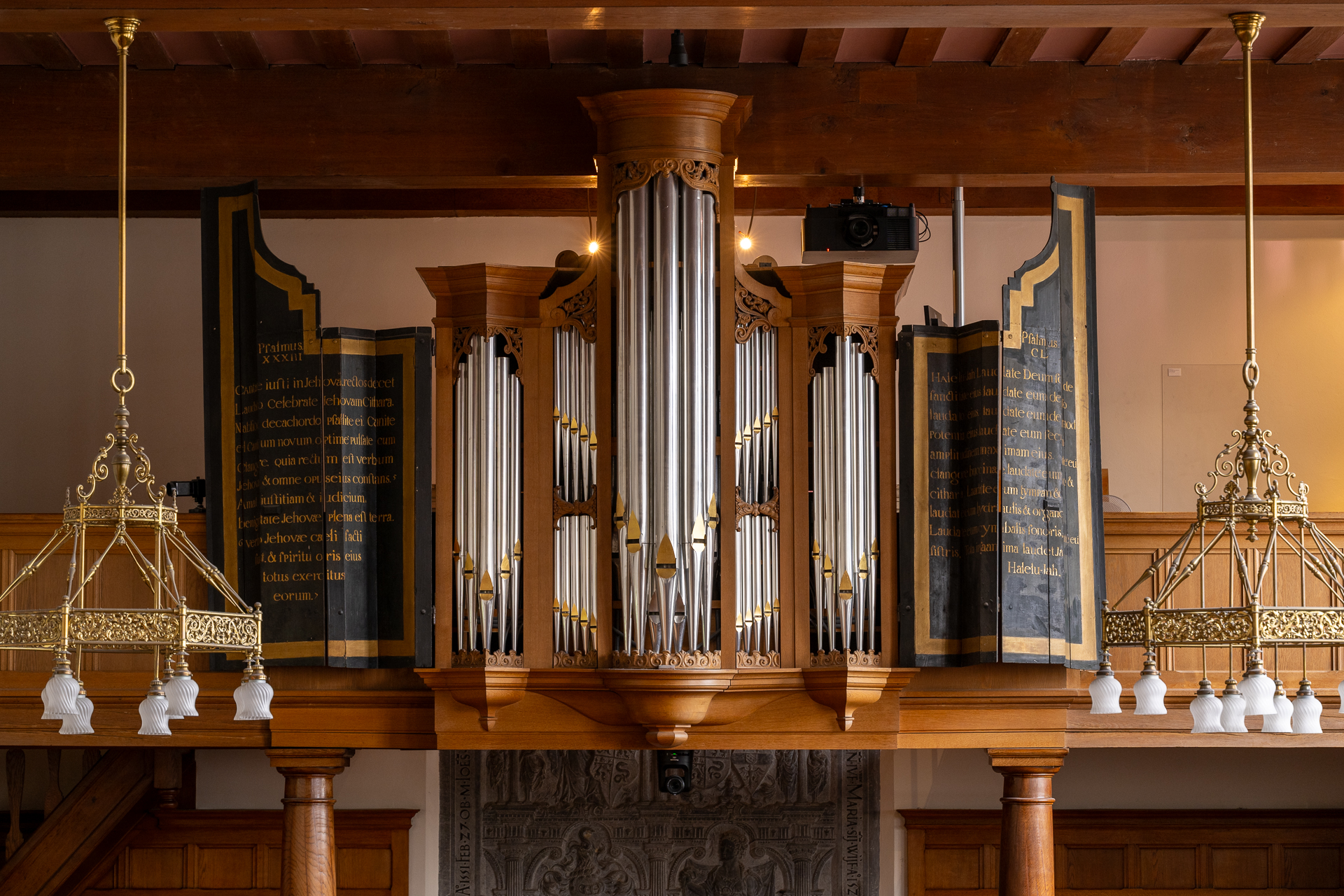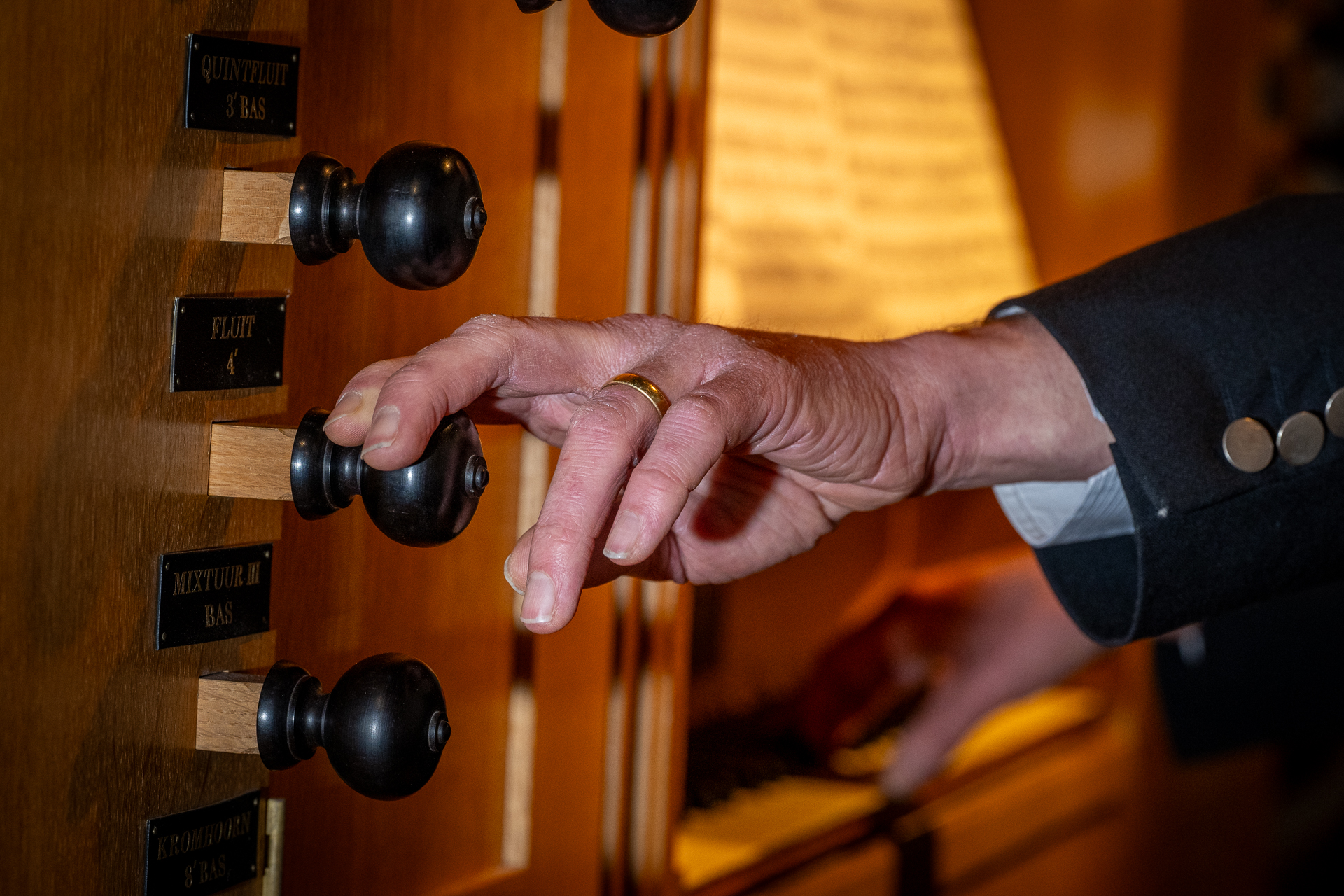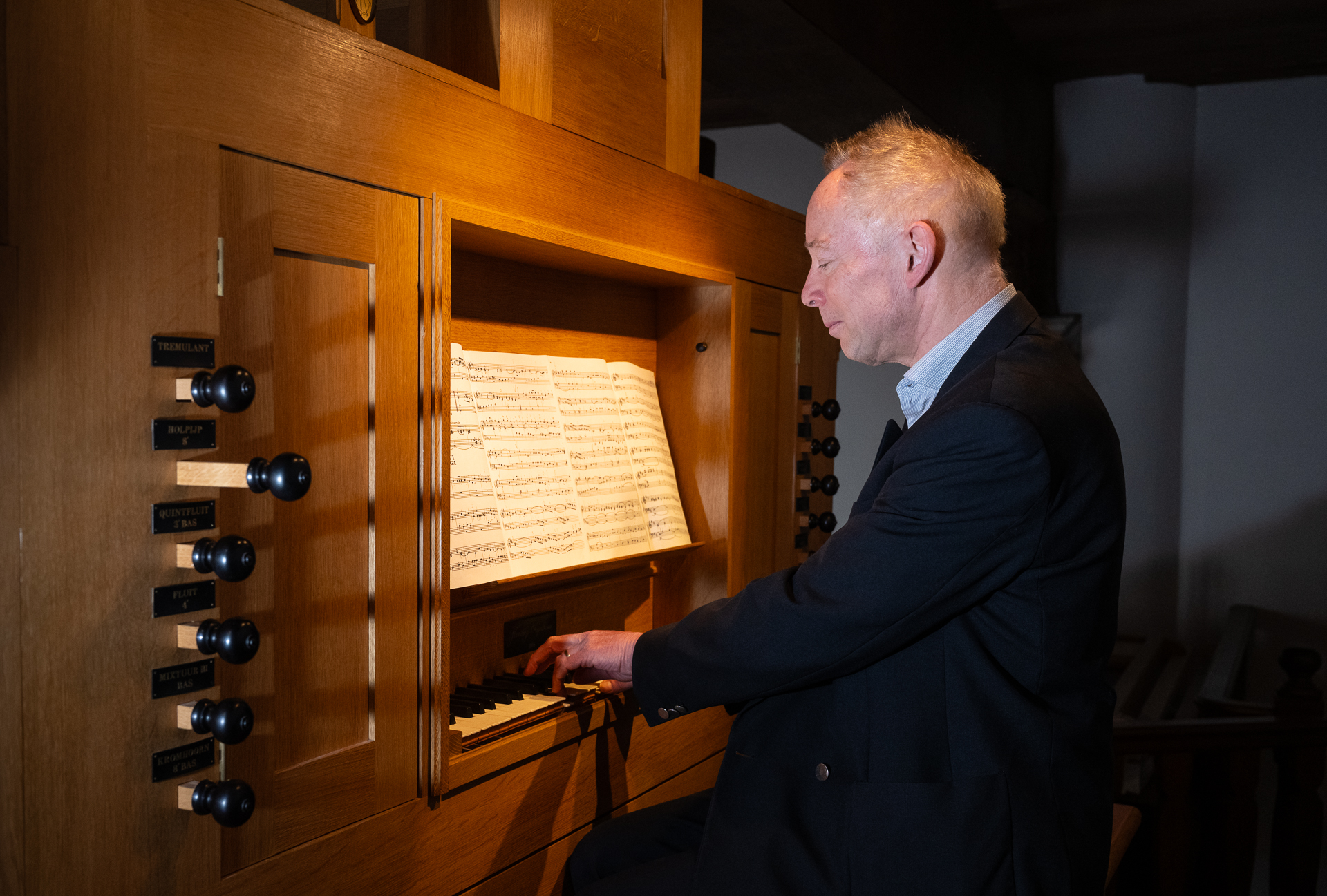
Flentrop organ in Academy Building turns 25: ‘It’s a whole orchestra’
The organ in the Academy Building is 25 years old. University organist Jan Verschuren and tuner Bert Crama talk about the long history of university organs, improvising with short cortèges and their love for this organ. ‘You can really go to town.’
You won’t immediately see the organ on entering the Academy Building’s Great Auditorium. But look up at the balcony and you can’t miss it. With its shutters decorated with Latin texts and the coats of arms of, among others, a former rector, the Flentrop Organ doesn’t look at all like a whippersnapper of just 25. The shutters date from 1675 and belonged to the first university organ.
That first organ, a gift for the university’s hundredth anniversary, was probably demolished on the advice of the university organist from 1821, Christian Friedrich Ruppe. ‘He was a tough nut’, says Crama. ‘He also had an orchestra and felt there wasn’t enough room for it on the balcony and that the organ was tuned too low.’
-

University organist Jan Verschuren and organ tuner Bert Crama at the organ in the Academy Building. -

The Flentrop Organ in the Academy Building with the shutters from 1675.
The organ was demolished in 1828. The shutters went to Museum De Lakenhal. There wasn’t a new organ until 1935 but no one was mad about it. ‘It led a sad existence’, says Crama. ‘When I came to work here as an electronic engineerin 1980, I used to go and play it at lunchtime. But the organ was so bad that it got to the point that I told the university we needed an organ builder to come. In the end, Rector Magnificus Lammert Leertouwer (rector from 1991-1997, Ed.) asked for a new organ as a leaving gift.’
Going to town
Verschuren and Crama are huge fans of the latest organ. At university ceremonies, such as inaugural lectures, Verschuren (or another organist) plays the organ and Crama pulls out the stops and turns the pages of the sheet music. ‘You can’t play and operate the stops at the same time’, says Verschuren. ‘They’re a unique aspect of the organ. By activating or deactivating stops, you get a different sound.’ The organ can resemble the sound of a flute or trumpet, for example.
All these different sounds are what Verschuren loves about the organ. ‘It’s a whole orchestra. You can play softly but you can also really go to town. Then you can fill the room.’
-

Activating or deactivating stops gives the organ a different sound. -

Jan Verschuren: ‘You can play softly but you can also really go to town.’
Improvising during cortège
To ensure that the organ is used, the protocol was amended to state that organ music accompanies the cortège as it enters and leaves the room at inaugural lectures and valedictory lectures. ‘Before that, the procession of professors always entered in silence’, says Verschuren. ‘Framing an inaugural lecture or valedictory lecture with organ music adds an extra cachet. As a result professors – more than before – wanted to join the cortège.’
The length of time the organist plays depends on the length of the cortège. ‘Once all of the professors have passed by, you have to bring the piece of music to a satisfactory end’, says Verschuren. ‘That calls for improvisation. And I always have to ensure the piece of music is long enough for a longer cortège.’
Upbeat music
The organists can choose which pieces they play. Verschuren prefers anything by Bach or Telemann. ‘I like to keep it upbeat and often choose fanfares. It’s celebrations that I’m playing at, after all.’
Concert: 25 years of the Flentrop Organ
To celebrate the organ’s 25th anniversary, a concert will be given on Saturday 16 March in the Academy Building by organists Jöel Boone, Cor de Jong and Jan Verschuren and the Collegium Musicum Chamber Choir conducted by Gerrit Maas. Organ works by Böhm, Fischer and Monnikendam and choral works by Whitacre, Mäntyjärvi and De Klerk will be performed. The final piece will be Cantata BWV 79, ‘Gott der Herr is Sonn und Schild’ by Johann Sebastian Bach.
Text: Dagmar Aarts
Photos: Monique Shaw
